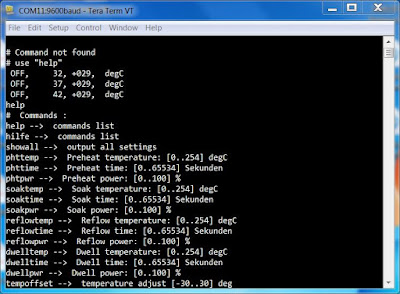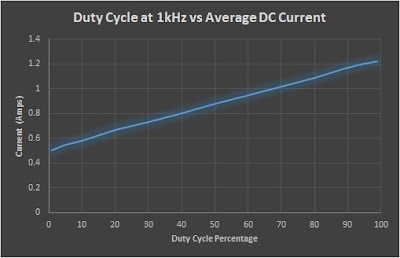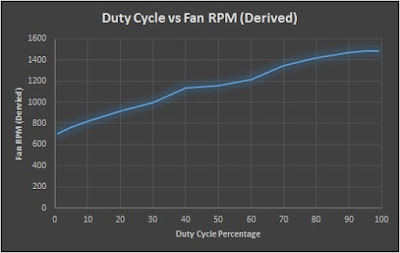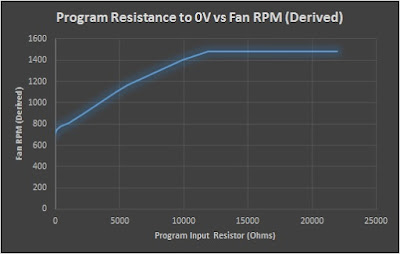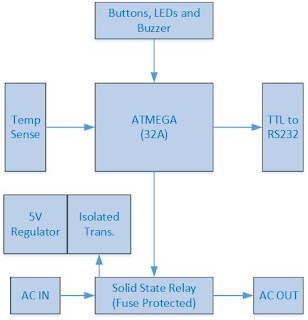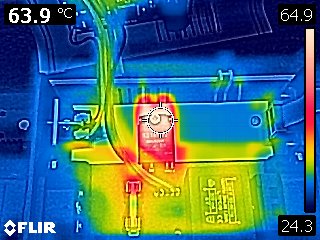This blog explores the suitability of the Beta Layout (V2) Reflow Controller for second reflow PCB's (boards). The concept behind second reflow is that the surface tension of solder retains a component during the solder reflow process. This retention of the component is due to the ratio of component weight to the total component pad surface area (aka component land pattern).
Literature
There is no shortage of literature released on the subject of double sided PCB's and the reflow process. Reading on the subject can be found in journals such as Component Candidacy of Second Side Reflow with Lead-Free Solder, in documents Weight Limits For Double Sided Reflow Of QFNS or on websites such as Surface Mount Process.
The engineer that was cited in the document "Weight Limits For Double Sided Reflow Of QFNS" is Phil Zarrow of ITM Consulting, who also authored another document Reflow Soldering of Through-hole Components. This document originally started me on the double sided reflow process and only recently did i consider using this with my home reflow oven.
Weight to Area Rule
Described in the literature by Phil Zarrow is a ratio for weight of a component to the total pad mating area. Originally listed in imperial it states that to hold the component:
Reflow Testing with Small Components
Using a sample board to test solder reflow with small components, the amount of solder paste was varied.
In the image below the resistors circled in RED had an over application of solder paste, resistors circled in yellow had a moderate to normal application of solder paste and the diode circled in blue had a normal application of solder paste.
For the resistors used on the sample PCB, 0805, the mass per resistor is listed as 0.45 grams per 100 pcs. The mass of the resistor was taken from the Yageo document.
Reflow Testing with Medium Components
Next sample board was prepared with Stannol flux for a small Panasonic inductor, ELL-6RH series.
The footprint on the sample board was larger than the size recommended by Panasonic however the solder paste was added and the part was placed in position.
Literature
There is no shortage of literature released on the subject of double sided PCB's and the reflow process. Reading on the subject can be found in journals such as Component Candidacy of Second Side Reflow with Lead-Free Solder, in documents Weight Limits For Double Sided Reflow Of QFNS or on websites such as Surface Mount Process.
The engineer that was cited in the document "Weight Limits For Double Sided Reflow Of QFNS" is Phil Zarrow of ITM Consulting, who also authored another document Reflow Soldering of Through-hole Components. This document originally started me on the double sided reflow process and only recently did i consider using this with my home reflow oven.
Weight to Area Rule
Described in the literature by Phil Zarrow is a ratio for weight of a component to the total pad mating area. Originally listed in imperial it states that to hold the component:
Grams per square inch must be ≤ 30 (grams)
Changing to metric measurements:
Grams per 645.16 mm squared must be ≤ 30 (grams)
Reflow Testing with Small Components
Using a sample board to test solder reflow with small components, the amount of solder paste was varied.
In the image below the resistors circled in RED had an over application of solder paste, resistors circled in yellow had a moderate to normal application of solder paste and the diode circled in blue had a normal application of solder paste.
| Sample PCB With Various Solder Paste Amounts Applied |
The solder paste on the board was allowed to sit for an hour, then the board was reflowed in the oven with components facing downwards.
| Sample PCB After Reflow |
After reflow, as can be seen in the image below, all components were located and most reflowed correctly except for the additional solder paste. The normal application of solder paste was sufficient hold both the resistors circled in yellow and small diode circled in blue.
| Sample PCB Reflow Closeup |
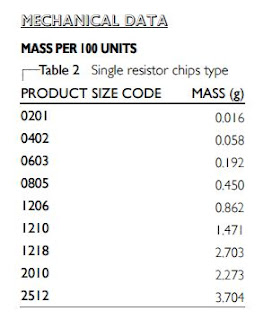 |
| Yageo Resistor Mass |
For the resistor pads and dimensions the details were taken from another Yageo document.
 |
| Yageo Pad Size |
In that same document the parameters W, width, and I2, pad depth, were used.
 |
| Yageo Pad Dimensions |
For the 0805 package there are two pads of 1.25mm x 0.35mm, giving a total of 0.875mm squared. Using this value to determine the maximum mass from the metric ratio "645.16 mm squared ≤ 30 grams" yields 0.0407 grams.
For the Yageo 0805 resistor with a mass of 0.045 grams, using just the mating area of the Yaego resistor pad, the rule recommends that 0.0407 grams should be the limit. This rule appears to have some tolerance which may be due to the larger land pattern on the PCB possibly involving solder surface tension between the physical sides of the resistor pad to the land pattern.
Reflow Testing with Medium Components
Next sample board was prepared with Stannol flux for a small Panasonic inductor, ELL-6RH series.
| Sample PCB with Solder Paste on Inductor |
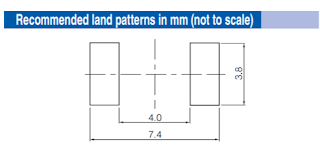 |
| Panasonic Recommended Footprint |
Immediately the board was placed component side down inside the reflow oven and the soldering cycle started.
| Sample PCB with Failed Reflow |
The inductor held its position against the sample board until the reflow cycle where it promptly fell off the board.
Summary
Although the inductor tested on the sample board in this blog was not suitable for reflow under the circumstances, this same result is not true for larger devices such as the TO-263-5 part shown below. The thermal pad beneath the body of the device (TO-263-5) is usually large in area which facilitates better adhesion and suitability for second reflow boards.
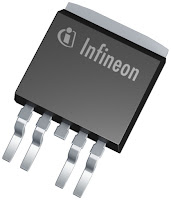 |
| TO-263-5 Package |
With a number of factors influencing double sided PCB reflow for the home hobbyist, each factor should be taken at its own merit and how it is applicable to a specific board, reflow oven and components to be populated.


